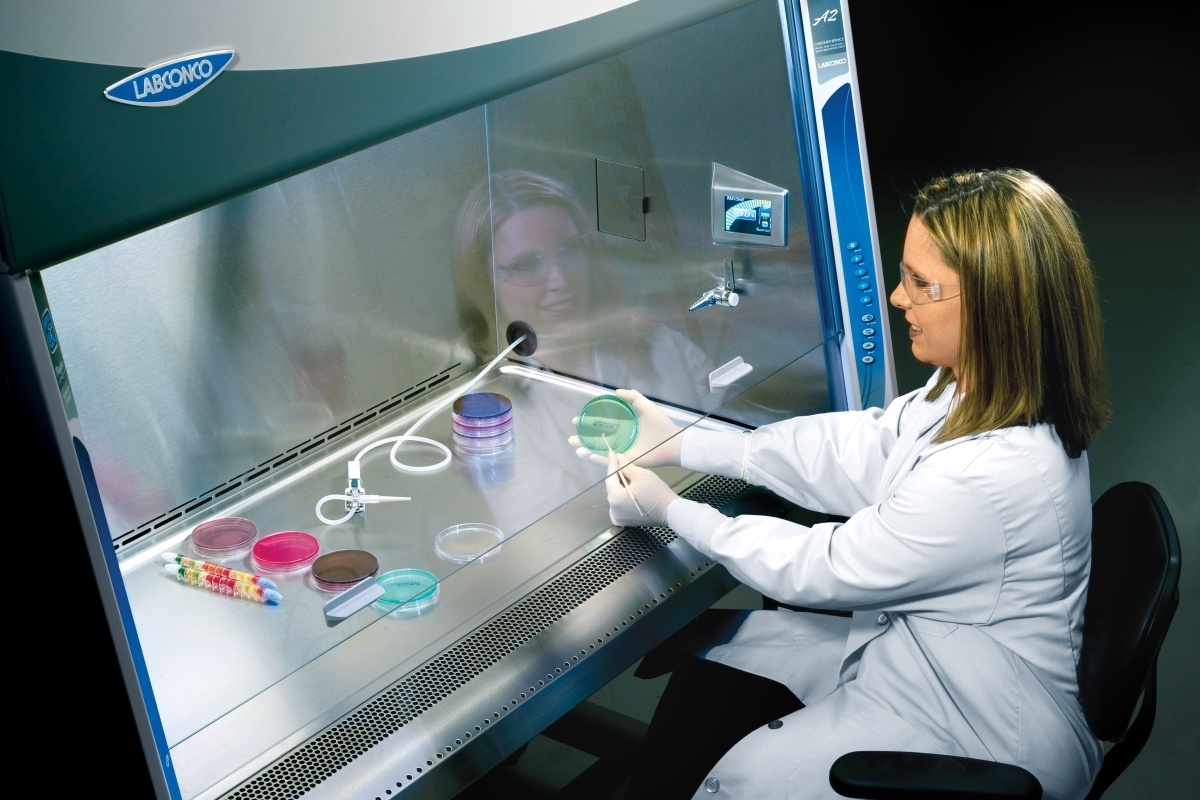
A Note on BSC Safety
All Class II Biological Safety Cabinets provide the same level of protection against hazardous aerosols and particulates. The following analysis examines how the different Types of Class II BSCs protect users from nuisance odors and vapors, hazardous vapors and hazardous radionuclides. Keep in mind, the safest BSC in the world cannot offer protection if used in an unsafe manner.
Safety Gap Analysis
If chemical safety is not a concern for your microbiological processes, then a recirculating Class II, Type A2 Biosafety Cabinet is perfectly suitable; however, if chemical safety is a concern, then you should use a vented Class II BSC. The Class II, Type C1 Biosafety Cabinet offers the greatest combination of safety and flexibility, and is therefore the "no-brainer" choice in most circumstances.
Know your needs
|
Chemical Safety Features |
Type A2 |
Type B1 |
Type B2 |
Type C1 |
|
Single Pass Airflow |
x |
✔ |
✔ |
✔ |
|
Intuitive use of work space |
✔ |
x |
✔ |
✔ |
|
Easy installation and building demands |
✔ |
✔ |
x |
✔ |
|
Confident chemical safety |
x |
x |
✔ |
✔ |
|
Active Protection |
x |
x |
x |
✔ |
The two major differences between Type A1 and Type A2 cabinets:
- Inflow velocity: Type A1 BSCs are required to have a minimum of 75 lfpm (0.38 m/s) inflow, while Type A2 BSCs must have a minimum 100 lfpm (0.51 m/s) inflow.
- Canopy (or Thimble) installation: Canopies can be used on A2 BSCs to control odors as well as safe concentrations of chemicals; however, a canopy can be used on an A1 only to control nuisance odors.
Type A2 Chemical Safety
|
Type A cabinet with room exhaust |
Type A cabinet with canopy/thimble connection |
| Since Type A cabinets have a shared plenum (meaning all of the air moved by the cabinet is allowed to mix before being redistributed through the cabinet), chemically contaminated air will be returned over the work zone. |
Class II A1 & A2 BSCs have the same cross section and can both be outfitted with a canopy (or thimble) in order to remove the exhaust from these cabinets much like a fume hood would. |
The shared plenum acts as a "mixing bowl" for the BSC's air prior to being resupplied over the work surface or exhausted from the cabinet, and HEPA filters do not trap chemical vapors; therefore, the column of air supplied over the work zone should be considered chemically contaminated.
In the following diagram, the blue shading represents chemically contaminated air distributed over the work surface.
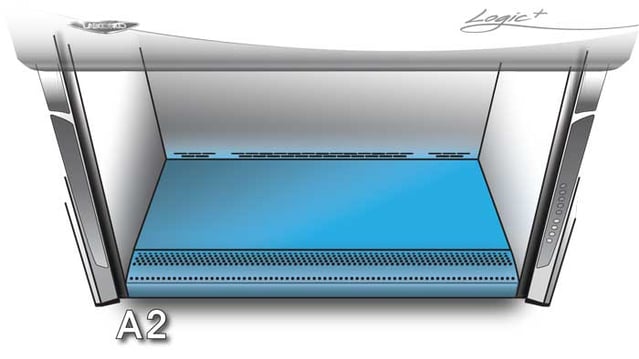
From the view of an operator, this means that the entire work surface of a Type A BSC is susceptible to chemical contamination if vapors are being emitted in the cabinet's work zone. Again, the blue shading indicates the area of the work zone where air can recirculate.
Due to their design, Type A biological safety cabinets should not be used with hazardous concentrations or volumes of vapor-emitting chemicals since all of the air bathing the work zone would be chemically contaminated.
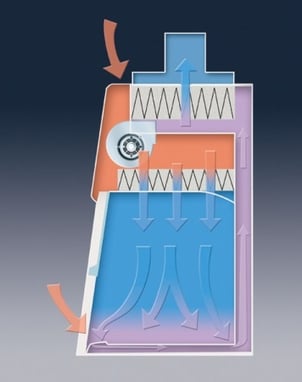
Whereas Type A Biosafety Cabinets always pass HEPA filtered air recycled from the cabinet's interior over the work surface, Type B2 Cabinets always pass only HEPA filtered room air over the work surface. Type B2 BSCs incorporate a single pass airflow system throughout the cabinet. No air is recycled. Also known as Total Exhaust BSCs, the sole purpose of the Type B2 is to handle situations where biological and chemical hazards are used together.
Handling Hazardous Chemicals & their Vapors
If you follow the arrows in the cross sectional diagram for the B2, you can see that all of the air that is brought into the cabinet finds its way through the exhaust HEPA filter. This allows work with chemical hazards to be performed inside this BSC design without risk to the operator or the samples. None of the air is resupplied back over the work zone.
The red shading indicates the area of the cabinet that is safe to work with chemicals. From the operator's perspective, the entire work zone is free to use chemicals safely. Air flowing over this zone will take a single and direct path to the exhaust system where it will be removed.
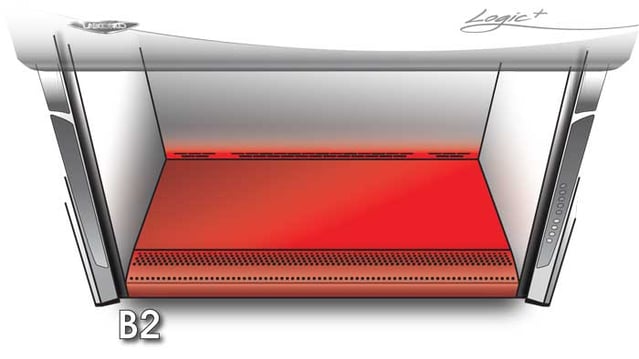
Type B1 Cabinets
A less commonly seen type of Class II BSC is the B1 Type. This type of cabinet brings some interesting solutions to BSC 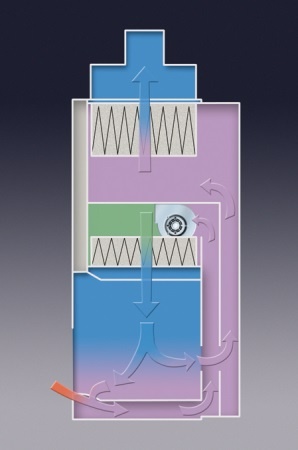 design problems, but in doing so, brings about its own safety concerns. The B1 cabinet functions by directing various columns of air to different channels, thereby increasing chemical safety in specific parts of the cabinet's work zone.
design problems, but in doing so, brings about its own safety concerns. The B1 cabinet functions by directing various columns of air to different channels, thereby increasing chemical safety in specific parts of the cabinet's work zone.
Understanding the B1's upside
- The B1 uses far less exhaust air than a B2, more similar to an A2 with a canopy.
- The B1's single pass airflow in the back provides superior chemical safety over an A2 with a canopy.
The B1 quite literally splits the work zone's column of supply air from the face of the cabinet to the back. Air behind this split (commonly referred to as the "smoke split") is pulled into the direct exhaust of the B1 cabinet by the roof-mounted exhaust blower. Downflow air in front of the smoke split mixes with inflow air and is then recirculated (through the Supply HEPA) back over the work surface. This design offers several attractive benefits:
- The B1 uses far less exhaust air than a B2, more similar to an A2 with a canopy.
- The B1's single pass airflow in the back provides superior chemical safety over an A2 with a canopy.
Where the B1 falls short
While it certainly is a valiant attempt to merge the efficiency of Type A's with the chemical safety of Type B BSCs, the B1's design creates its own host of issues. Unfortunately, these shortcomings result in serious safety concerns:
- A user must work behind the smoke split when handling hazardous chemicals and therefore must be trained to work very conscientiously.
- The smoke split is an invisible line that can only be identified by using smoke or another visual aid.
- The invisible line of the smoke split will move toward or away from the user any time air pressure in the room or workspace changes and as the BSC's filters load.
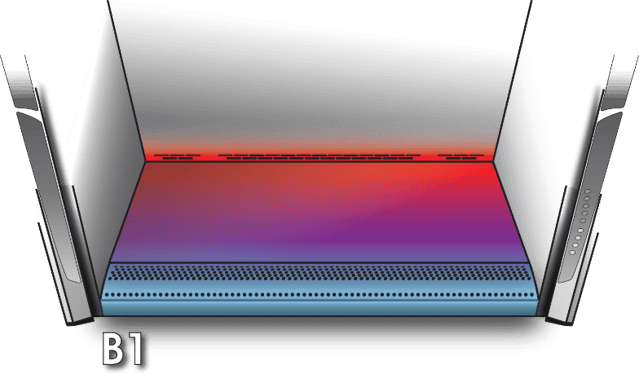
In order to use a B1 properly and safely, the operator must be trained to handle hazardous chemicals behind an invisible line that shifts and moves. The red zone in this image indicates where hazardous chemicals can be used safely, and the blue zone shows where in the work area the air will be recirculated. Another zone is shaded purple to indicate the area of the B1 cabinet's work surface where the smoke split may be located; however, the thickness of this band illustrates the uncertainty of safety when handling chemicals in this type of enclosure.
The most recent addition to the world of Class II biosafety cabinets is the Type C. This cabinet directly addresses the gaps in safety that exist in Type A and Type B BSCs. The Type C is flexible enough to take on the jobs of both Type A and Type B cabinets. Innovations in directional airflow have allowed the Type C to be safer than Type A and Type B BSCs, while maintaining low energy costs.
Active Protection Protocol
In Type B cabinets, the CDC writes, "Should the building exhaust system fail, the cabinet will be pressurized, resulting in a flow of air from the work area back into the laboratory." Type C cabinets maintain negative pressure in the event of an exhaust failure for up to five minutes (programmable), preventing the flow of air into the laboratory.
Chemical Zone
- Safer than Type A: The Type C is also safer than a Type A2 cabinet because all of the air that passes through the chemical zone is expelled from the cabinet in a single pass.
- Safer than Type B: Working with chemicals in the Type C is safer and more intuitive than in Type B1 BSCs because of its chemical zone, a clearly defined area for chemical handling. Air in this heavily perforated area of the work surface is exhausted in a single pass. Furthermore, safety is also improved because the size and shape of the chemical zone does not change while in use as it can within a Type B1 cabinet. The Type C is also safer than the Type B2 due to its programmable Active Protection Protocol.
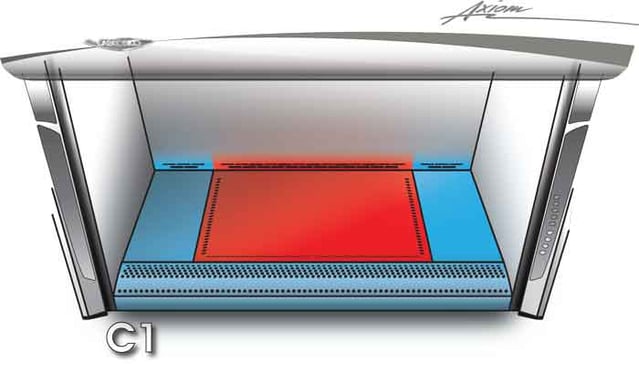
*republished with permission from Labconco Corporation
For more information on Labconco or other brands of biosafety cabinets, contact our Technical Services Manager, Rand Weyler - http://web.newenglandlab.com/contact-our-technical-services-manager.

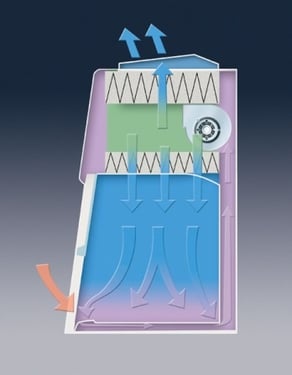
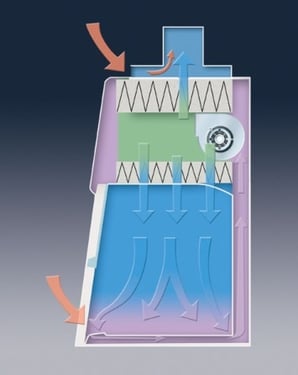
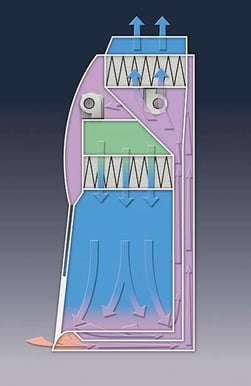
 copyright 2014, new england laboratory casework co., inc
copyright 2014, new england laboratory casework co., inc 

